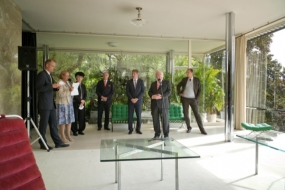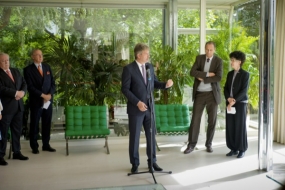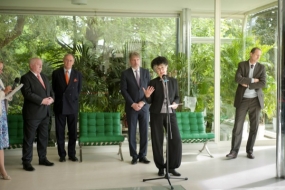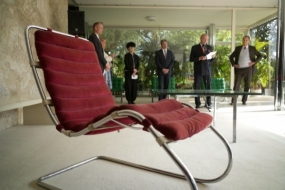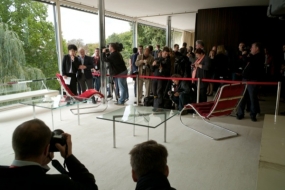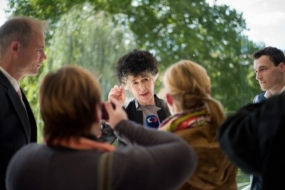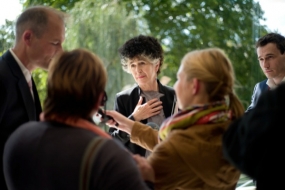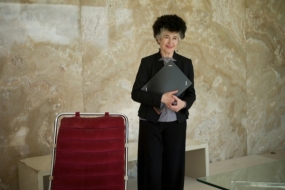On Tuesday 23 September 2014 a ceremonial reception of a set of original furniture, which was part of the interior features of this world-famous building was held at the Villa Tugendhat. The ceremony was attended by the Brno Mayor Roman Onderka, Mayor and Governor of Vienna Michael Häupl, Austrian Ambassador to the Czech Republic Ferdinand Trauttmansdorff and the youngest daughter of the villa commissioners, Daniela Hammer-Tugendhat.
The City of Brno acquired four original pieces from the Villa Tugendhat furnishing in its property – a sideboard, a bench, a coffee table and a chaise longue. The purchase agreement entered into Brno City Museum, which manages the Tugendhat villa, with prof. dr. Daniela Hammer-Tugendhat. The purchase price of 275 000 Euros was determined based on an estimate of the Dorotheum auction house in Vienna and confirmed by other expert reviews. Financial aid was pledged by the partner the City of Vienna and the Ministry of Culture from the Integrated System Of Tangible Cultural Heritage Protection grant programme.
These are the following pieces of furniture:
Sideboard of white painted wood with bearing steel tubes and glass sliding doors; designed by Lilly Reich, 1930, produced by SBS Standard bytová společnost (Standard Housing Company) Brno
Bench made of white painted wood; designed by Ludwig Mies van der Rohe, 1930, produced by SBS Standard bytová společnost (Standard Housing Company) Brno
Coffee table of strip steel with a glass top (not original); designed by Ludwig Mies van der Rohe, 1930, produced by Berliner Mettalgewerbe Jos. Müller
Elegant chaise longue of spring steel pipe with red upholstery attached with leather straps with buckles; designed by Ludwig Mies van der Rohe, 1931, produced by Bamberg Mettalwerkstätten
Part of the original furniture designed by Ludwig Mies van der Rohe and his collaborator Lilly Reich directly for the villa in Brno was taken away by the Tugendhats when they fled from the Nazi danger to Switzerland in 1938. Other furniture disappeared from the villa during the Second World War.
In the 1960’s a Brno architect Jan Dvořák discovered and acquired four pieces of original furniture from the Villa Tugendhat: a sideboard, a bench, a small table and a chaise longue. The furniture was presented at the legendary exhibition of the life and work of Ludwig Mies van der Rohe in Brno House of Arts in 1968–1969. In 1985, the group was purchased by the Moravian Gallery in Brno and exhibited in its permanent collection of applied arts.
In 2006, this collection of furniture from the villa Tugendhat was returned to the heirs of Fritz and Greta Tugendhat in restitution (according to Law 212/200 Coll., to mitigate certain property injustices caused by the Holocaust). Having been declared a movable cultural monument however (in 2008), the furniture could not leave the Czech Republic, and thus in agreement with the new owners remained in the care of the Moravian Gallery.
The furniture will now return to the Villa Tugendhat after more than seventy years as exhibits of exceptional artistic and historical value. Visitors to the villa can admire it after some necessary restoration to preserve its authenticity. It mainly includes conservation to prevent the development of existing defects and removing of unoriginal degrading details (the scope and method of restoration will be decided by the national monument care authority).
Interior and furniture creations by Ludwig Mies van der Rohe and Lilly Reich from the period between the wars belong to icons of world design of the 20th century. The original furniture designed and manufactured during the period of their cooperation is prized as supreme works of art. They are unique pieces and their artistic significance documents the evolution of modern furniture design worldwide. This unique acquisition puts the Brno City Museum alongside the Museum of Modern Art in New York, whose collections also include the original furniture from the Villa Tugendhat.
